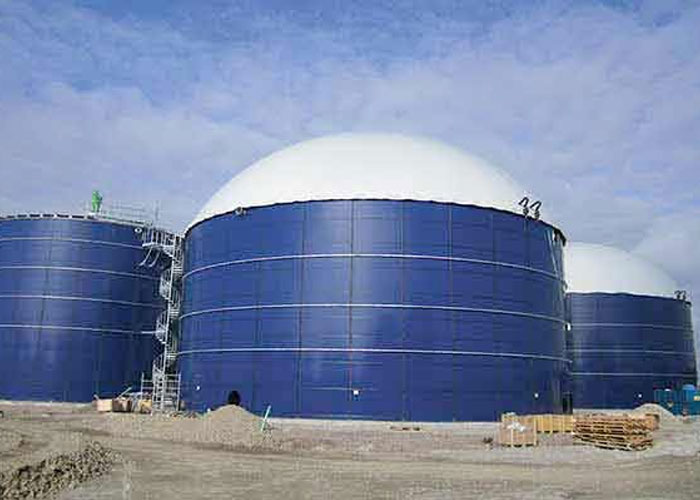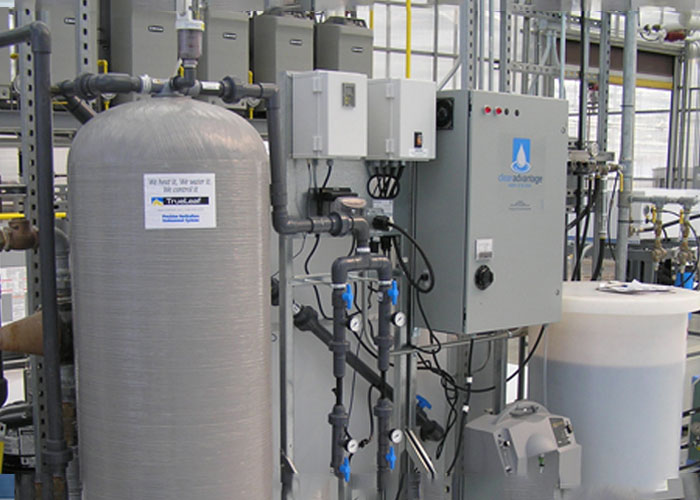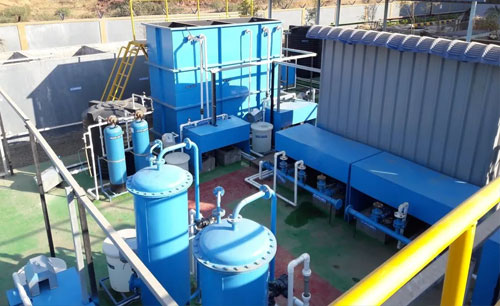A Sewage Treatment Plant Process uses several different processes to treat sewage. These processes include anaerobic digestion, chemical treatment, and storage in lagoons or large ponds. This article discusses these different processes and the advantages and disadvantages of each one. It also provides basic information about the different types of sewage treatment technologies.
Secondary treatment
There are several steps in the sewage treatment process. The first step is pretreatment, which is used to remove bulky materials and solids from wastewater to improve downstream processes. Solids also protect pipelines. Primary treatment removes sediments, fats, and other settleable materials from wastewater. This reduces the total suspended solids and reduces biological oxygen demand. The next step is secondary treatment, which utilizes biological processes to further reduce the solids in the effluent. The process also includes disinfection, which is a final step.
The DM water treatment process uses deionisation to remove dissolved minerals from the water. The natural water contains a high level of dissolved salts, anions (sulphate), and cations (iron, calcium, sodium, copper, and bromide). These dissolved salts are detrimental to metal oxidation, scaling, and corrosion. DM plants are highly effective in removing these dissolved salts, leaving the water ultra-pure.
The secondary treatment process is ongoing, but there are some specific issues that can impact its efficiency. High BOD concentrations can result in process upsets, which result in decreased performance. Some of the most common causes of process upsets include toxic chemicals or unusually high or low levels of BOD.
Anaerobic digestion

Anaerobic digestion is one of the main components of the sewage treatment plant process. This process provides renewable energy in the form of methane. It also eliminates the need for aeration amenities. However, the main limitation of anaerobic digestion is the lack of biodegradable organic matter. To address this problem, a variety of pretreatment, intermediate-treatment, and post-treatment strategies have been developed. These include strategies that disrupt cell walls and reduce the amount of the extracellular polymeric substance that accounts for approximately seventy-five per cent of the total protein and ninety per cent of the total carbohydrates in sewage sludge.

Anaerobic digestion starts with the hydrolysis of the feedstock, which degrades insoluble organic polymers. The bacterial species responsible for this process are called acidogenic bacteria, and they transform sugars and organic acids into hydrogen and acetic acid. Methanogens are also present in the process, which transforms acetic acid and hydrogen into nitrogen and carbon dioxide.
Chlorination
Chlorination is an important part of the sewage treatment process. The purpose of this disinfection process is to reduce the growth of pathogens. These pathogens include mycobacteria, E. coli, and streptococcus, among many others. Chlorination is an effective disinfection method, and it is also highly cost-effective. Chlorine can be used by anyone, so long as they understand how it works.
Chemical processes produce chlorine, and the quantity required for disinfection depends on the impurities present in the water. Some impurities require a very high concentration of chlorine for them to be dissolved. Therefore, when chlorine is added to the water, it must first react with these impurities. This amount of chlorine is called chlorine demand. The process is known as breakpoint chlorination when the chlorine demand has been met.
Storage of treated sewage in large ponds or lagoons
Large ponds or lagoons are usually used for the storage of treated sewage. They are larger than traditional storage ponds and are not typically emptied while in operation. The sludge that accumulates at the bottom of the pond or lagoon must be periodically removed.
Lagoons are used to treat sewage, but their purpose is more than storage. They also serve as a filtration facility and can prevent groundwater contamination. The water in lagoons is usually released twice a year. In some cases, lagoons are lined with clay or other artificial materials.
When using a lagoon to treat wastewater, it's important to monitor its levels and discharge time. A lagoon with an adequate storage capacity can hold sewage for several days before it is released. Other facilities, however, may discharge the wastewater more quickly, reducing the time needed for algae control. Holding times can be adjusted to suit the specific needs of the wastewater treatment plant. By observing the TSS level regularly, operators can predict algae blooms in their lagoons and make changes to the discharge time accordingly.
Application of treated sewage to land
In the United States, the majority of municipal wastewater must be treated before it can be applied to the land. The process results in the solid byproduct known as sewage sludge. In most cases, the treatment process includes biological, chemical and thermal processes. The final product, also known as biosolids, contains nutrients that can be used as fertilizers. These wastewater sludges are monitored for contaminants such as heavy metals, toxicants and pathogens.
Although applying treated sewage to land is not new, a growing number of studies have examined its health and environmental impacts. Some studies have documented adverse health effects in people near these sites. Some residents have experienced headaches, skin rashes, and gastrointestinal distress. In addition, they have reported a negative impact on their quality of life. As a result, the National Research Council (NRC) Committee on Toxicants in Biosolids Applied to Land has recommended further research on the health effects of land application of treated sewage. This research is limited in part by differences in the composition of the sewage sludge, the application method, and the geographical features of the land.



Share Post